Hello!
My name is Takuto Fujioka, guitarist in an acoustic unit called BABY BABY and an occupational therapist.
Thank you for always reading!
How are you all doing?
The kitchen garden that I started this year has been successful, and I am living an all-you-can-eat tomatoes environment, which I love.
I was able to experience self-sufficiency for a little while, and I was able to learn to have gratitude for nature again.
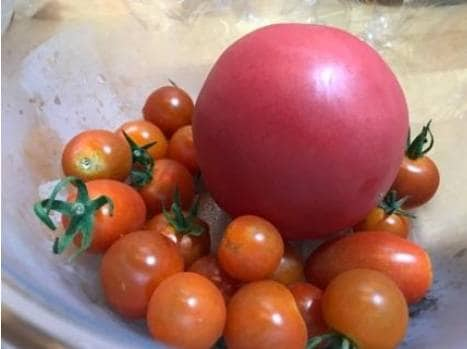
Well, today is about cutting, which everyone loves to do.
I’ll focus on Abe Futoshi, who cannot be ignored when talking about cutting.
Many guitar instructors also explain the treasure sword "machine gun cutting" of the legendary family, but I would like to focus on how to use the right hand (wrist). It's a pretty maniacal point, but if you like cutting or if you are an Abe Futoshi fan, please read to the end. Thank you!
Now, for the stroke and cutting, the movement of the arm called "forearm inward / outward" is very important.
(Supination is simply the movement of the arm from the elbow to the tip of the arm. Before reading this, please read the [Stroke Edition] column that I wrote before. Forearm supination is mentioned, so I think it will deepen your understanding. Please read it together with this one.)
Look for Abe Futoshi's performance video on YouTube.
Search for Abe Futoshi's performance videos
Since the majority of his videos on YouTube are live, there are some parts that are a little difficult to pick up, but you can see that Mr. Abe's cutting includes movements such as"forearm inward / supination + wrist flexion / flexor carpi ulnaris".
Wrist flexion / flexor carpi ulnaris refers to the movement of bending the wrist toward the thumb and little finger. It's like wiping a table.
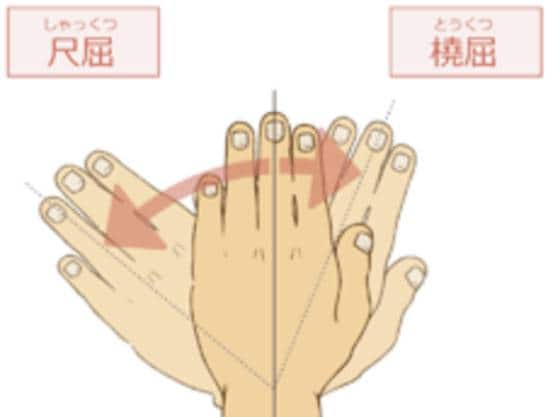
Usually,in cutting, there are many people who also perform the inward / outward rotation of the forearm and the movement of the elbow.
However, Mr. Abe holds the guitar low when he plays, which makes it difficult to use the movement of his elbows.
Therefore, I think that it was necessary to move the wrist in order to play fast phrases such as machine gun cutting.
Then, I would like to see how the two patterns differ between (1) cutting with forearm movement + elbow movement and (2) forearm movement + wrist movement.
① When cutting with the movement of the forearm + the movement of the elbow
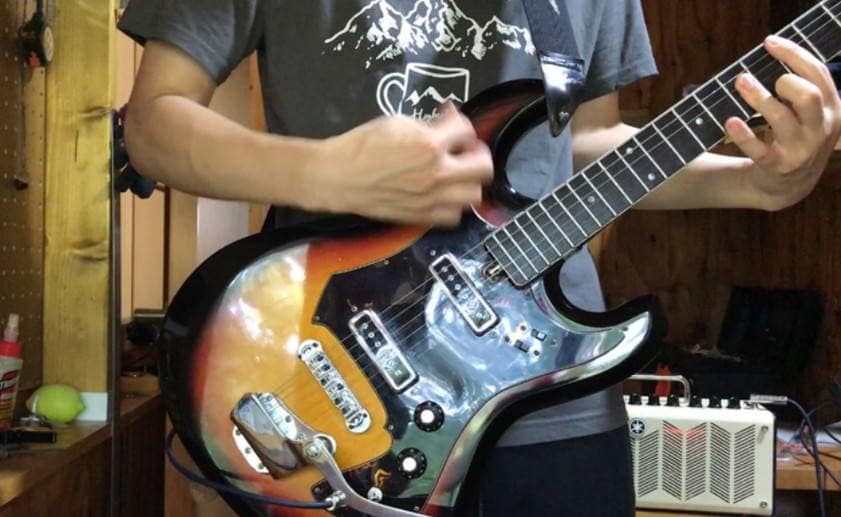
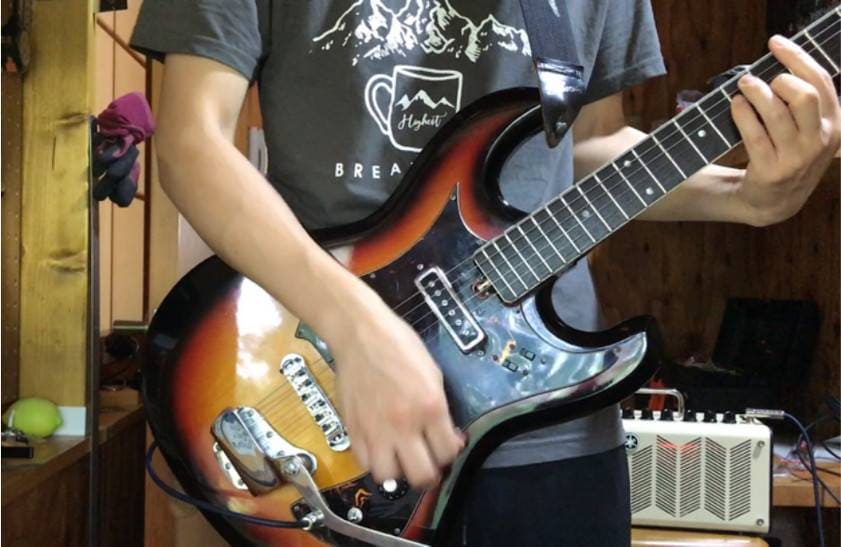
② When cutting with the movement of the forearm + the movement of the wrist
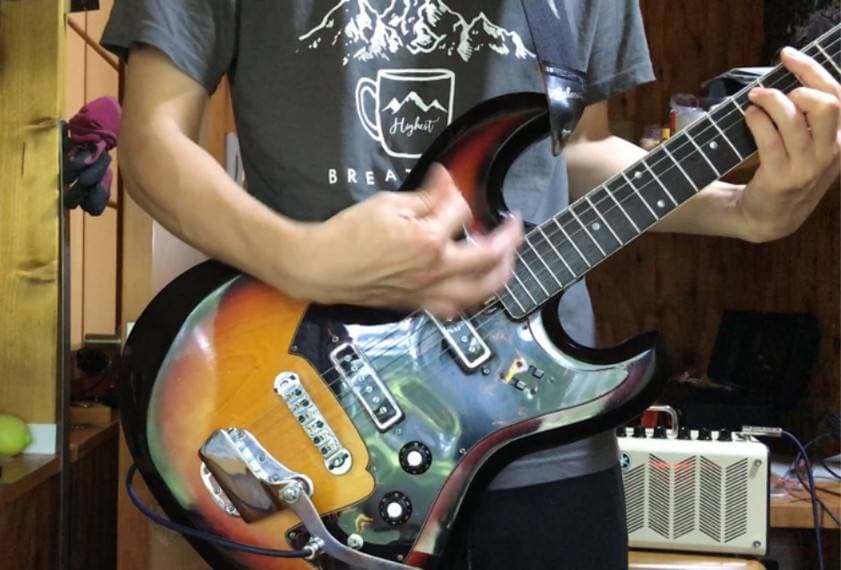
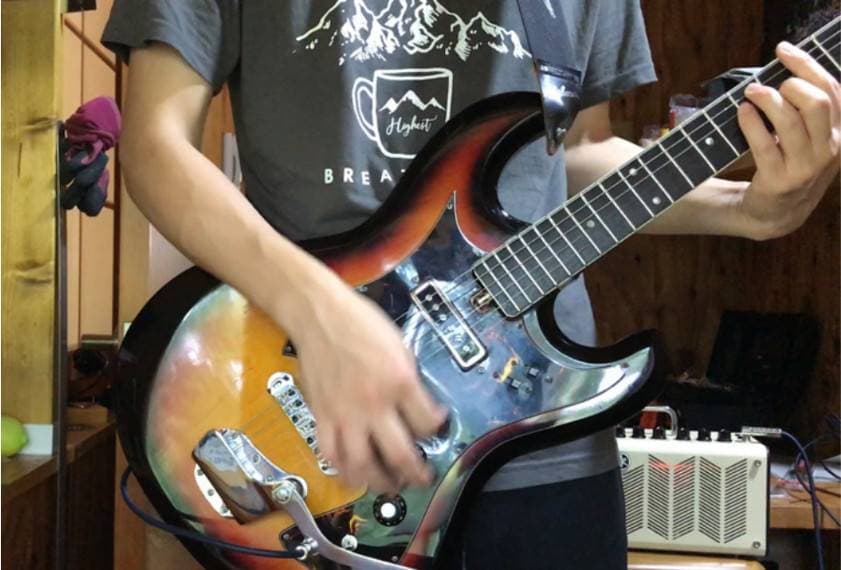
Can you see the difference?
It is hard to tell in the photo, but the swing width of the right hand is different.
If you look closely, when the picking is down, it stops at almost the same position in both cases, but when it is up, the swing width at the time of cutting is larger in "when cutting with the movement of the forearm + the movement of the elbow". It's wide. This is because the elbows have a wider range of movement than the wrists.
Even if you cut with the same amount of force, the wider the stroke and the larger the movement, the stronger the picking will be. Therefore, when cutting, if there is a difference in volume between down and up, it may be good to pay attention to the movement around this area.
In the case of "cutting with the movement of the forearm + the movement of the wrist", the swing width is narrow, so quick movement is possible. I think it is effective for brushing and cutting with a lot of sounds. Also, since the wrist can move finely, it is easy to aim at the string you want to play. I think this form is more suitable for single note cutting.
In Michelle Gun Elephant's songs, "chandelier" riffs and guitar solos often use phrases that cut only the 1st and 2nd strings. If that happens, muting will be difficult anyway. Therefore, like Mr. Abe, by "cutting with the movement of the forearm + the movement of the wrist", unnecessary strings will not sound and I think that you can cut more precisely.
What did you think?
This article is not about "this form is better than that!"
The most important thing is that you can choose a form that is easy to play after you understand it.
Therefore, it is good to be able to control how to play according to the phrase or song, and conversely, it is good to train one form saying "I am not so talented, so I can only do this!" No matter how you play, if you’re "playing the method of your choice", I think that originality and unique tone will come out of it!
If you study how to play in this way watching the guitarist you admire, there are many things that make sense. Please analyze how you play your favorite guitarist’s songs!
Next time, speaking of cutting, I would like to analyze how to use your right hand like Tomoyasu Hotei's right hand!Look forward to it!


























